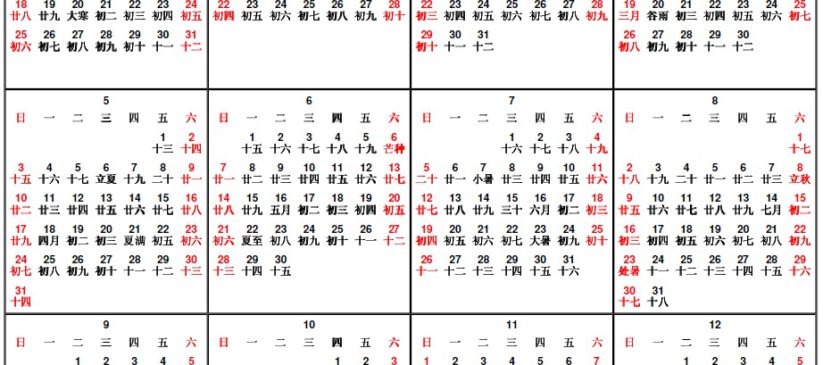Traditions & Culture
8 – The Chinese calender

The Chinese calendar is based on exact astronomical observations of the sun’s longitude and the moon’s phases. Unlike the Gregorian calendar, each month of the Chinese calendar has either 29 or 30 days.
Instead of adding one leap day on February 29 nearly every four years, the Chinese add a leap month every three years to keep their calendar in line with the Earth’s rotation. So, a leap year on the Chinese calendar has 13 lunar months.
The Chinese calendar is still observed among various Chinese communities around the world. The dates of most Chinese festivals are based on this calendar, and as such have movable dates on the Gregorian calendar.
Many Chinese consult this calendar to pick an auspicious date for important events such as when to marry, when to move house and when to start a business. Most weddings in the past were held on the eighth lunar month as this was considered as the most auspicious month. The seventh lunar month was and still is considered taboo for weddings.
The dates of Chinese festivals are based on the Chinese calendar which takes into account not only on the phases of the moon but also on the position of the sun. As such, most Chinese festivals have movable dates on the Gregorian calendar since it is a calendar based only on the position of the sun.
Some major Chinese festivals with movable dates on the Gregorian calendar are:
on the 1st day of the 1st lunar month — 1st day of Chinese New Year, also known as “Sincia”;
on the 9th day of the 1st lunar month — Feast Day of God of Heaven, also known as “Sembayhang Tuhan Allah” or “Sembahyang Ti Kong”;
on the 15th day of the 1st lunar month — 15th day of Chinese New Year, also known as “Cap Go Meh”;
on the 5th day of the 5th lunar month — Dragon Boat Festival, also known as “Pecun”;
on the 7th lunar month — Hungry Ghost Festival, also known as “Cioko” or “Sembahyang Rebutan”; and,
on the 15th day of the 8th lunar month — Moon Cake Festival, also known as “Sembahyang Tong Cu Pia”.
The two festivals with fixed dates on the Gregorian calendar are:
on 4 or 5 April — Tomb Sweeping day, also known as “Ceng Beng”; and,
on 21 or 22 December — Winter Solstice, also known as “Tang Ce” or “Sembahyang Rondé”.
Christopher Ng, December 2015
- Tan, G.L. (1963) The Chinese of Sukabumi: a study of social and cultural accommodation, New York: Monograph Series.


